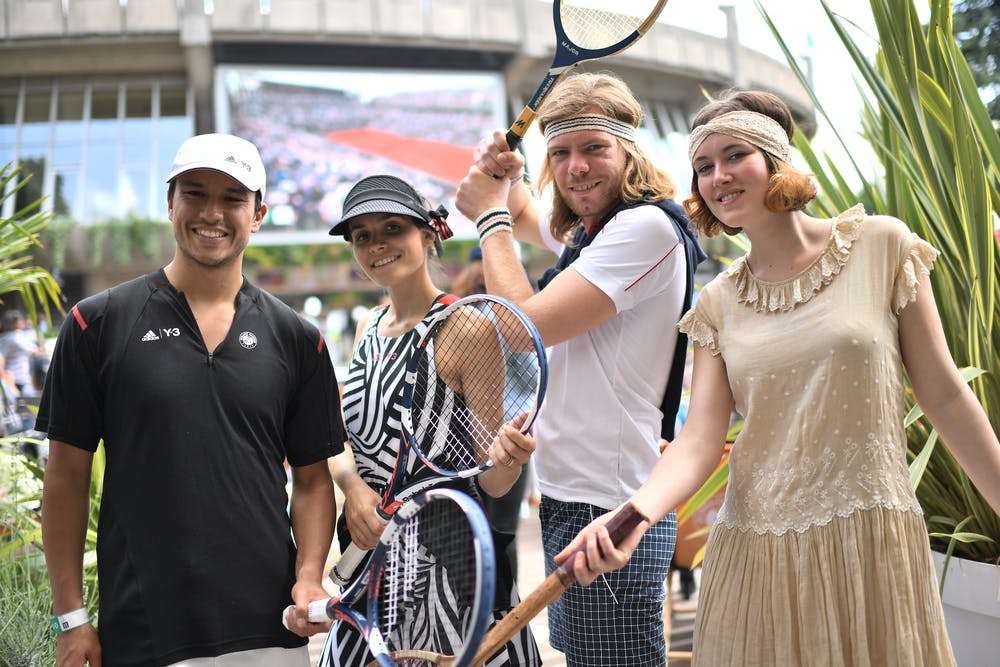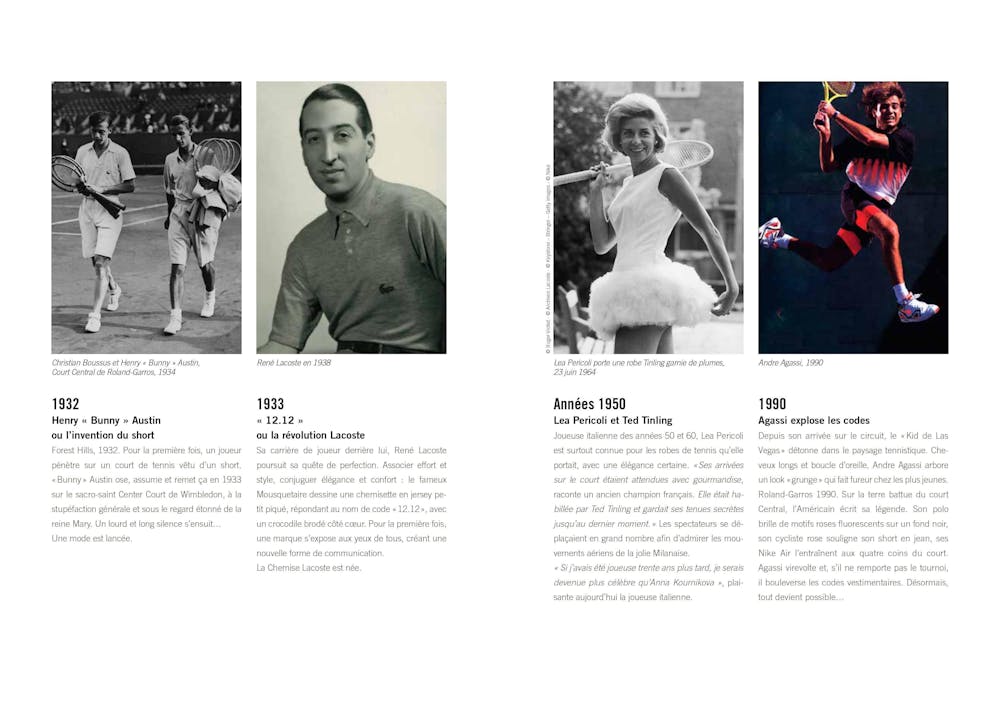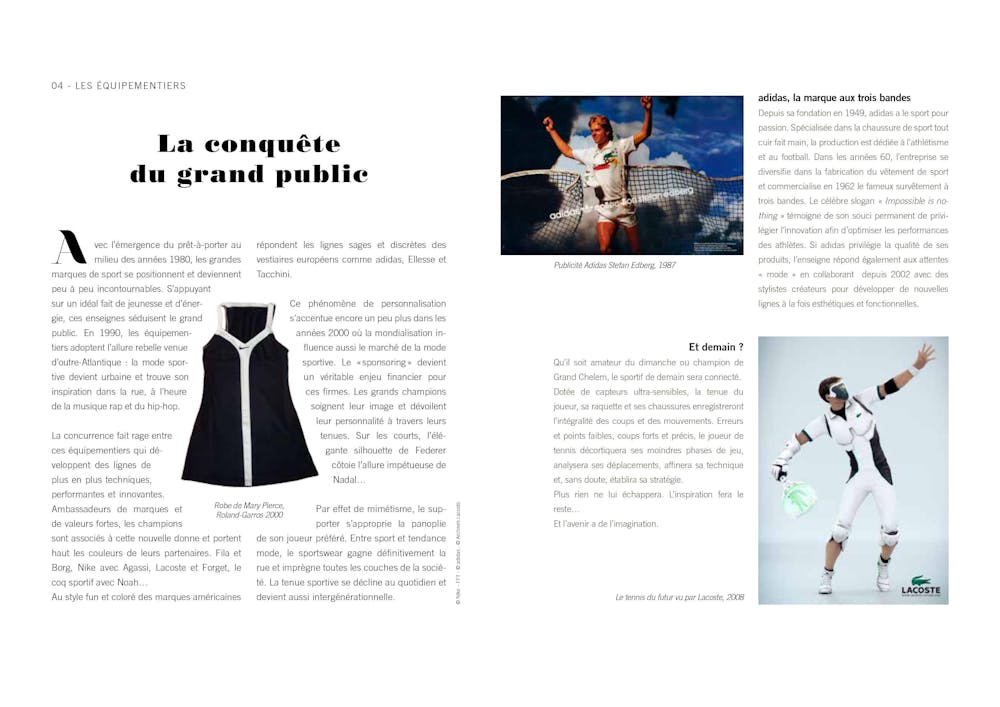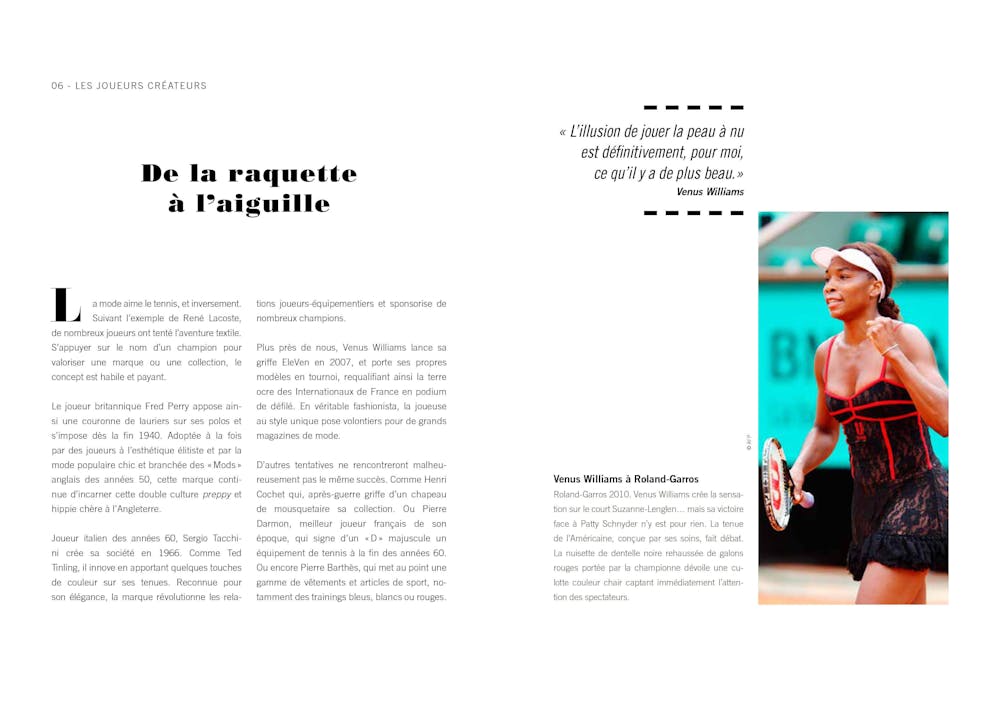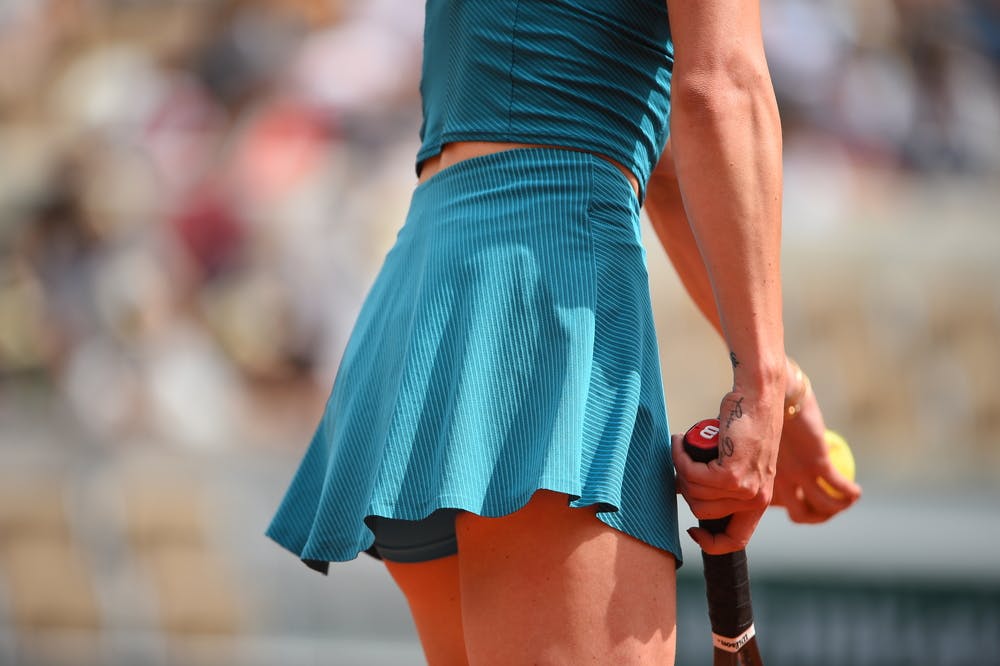Dressed for success
Over the years at Roland Garros, the outfits of tennis champions have undergone major changes and stylistic revolutions. The players asserted their influence and popularised tennis fashion. In the Roaring Twenties, the first such revolution was spearheaded by Suzanne Lenglen, who, in tandem with the great French haute couture designer Jean Patou, launched the “sporty silhouette” trend. And with that, “sportswear” was born!
Lenglen, known as “La Divine”, took part un the women’s emancipation, took part in the women’s emancipation movement on the clay courts, which saw bodies liberated and dresses shortened. Pleated skirt and turbans made their first appearance. At the end of the 1920s, René Lacoste took a turn at blending comfort, freedom of movement and elegance. Lacoste invented the petit piqué polo shirt, which quickly became the must-wear item on the courts, and which, over 90 years later, remains an icon of sport-chic style.
At the beginning of the 1930s, transformations took hold on the men’s side as well. Henry “Bunny” Austin decided to put his trousers away for good, making shorts the preferred male option in tennis tournaments. In the 1950s, another change, driven by Italian player Lea Pericoli, occurred in the women’s game. She was dressed by Ted Tinling, the avant-garde British designer, who caused something of an earthquake in the tennis world with his audacious creations that were completely at odds with the standards of the time.
In the 1990s, Andre Agassi overturned convention and shook up the accepted male tennis style with his emblematic grunge look. More recently, Serena Williams has boldly rewritten the rules of style and continues to play her part in liberating athletes’ bodies.
 ROLAND-GARROS
18 May - 7 June 2026
ROLAND-GARROS
18 May - 7 June 2026


